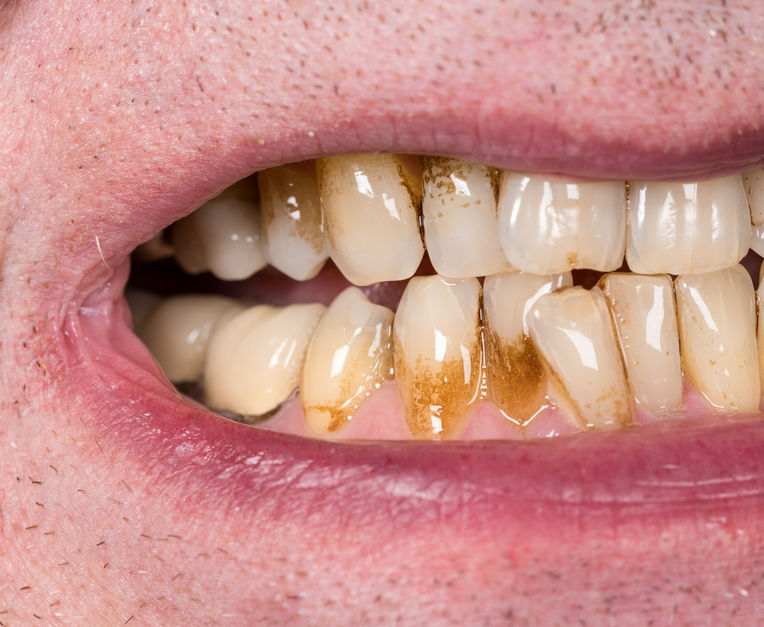Receding gums are a problem shared by many. If you’ve ever heard someone use the phrase “long in the tooth,” you might be surprised to know that it originated with receding gumlines. Long in the tooth refers to someone being older. This is because a tooth looks longer as the gums recede, and that’s what usually happens as we age.
Causes of Receding Gums
When gums recede, your teeth are more prone to decay because our roots are not covered by protective enamel. Here are some of the causes:
- Poor dental hygiene. Periodontal disease and poor oral hygiene is one of the main factors in receding gums. Gum recession can happen to anyone, even with excellent oral health; however, it’s still important to take care of your mouth, teeth, tongue, and gums.
- Brushing too hard. Yes, brushing too hard can be a contributing factor in receding gums. A person can actually brush their teeth too vigorously. Use a soft-bristled toothbrush to avoid this and use only as much pressure as you would put on a ripe tomato.
- Plaque buildup. When plaque builds up on your teeth, your mouth can succumb to many issues. Inflamed gums, or gingivitis, is one of the most significant risks. When someone has gingivitis, it can lead to periodontitis. Periodontitis is when space is created between the gums and the teeth, causing a loss of connective fibers and bone that keep the tooth roots healthy and in place.
Risk factors
There are some key risk factors for receding gums.
- Tobacco use. Anyone who uses tobacco products or smokes has an increased risk of receding gums.
- Did you know that age matters when it comes to oral health? Almost 88% of men and women over the age of 65 have at least one tooth with a receding gum.
- Receding gums could simply be part of your genetic code. Receding gums can be passed along for generations.
Treatment for Receding Gums
First and most importantly, gum tissue doesn’t grow back. Once it is lost, it’s gone for good. That’s why preventive measures should be taken to reduce your risk. You can slow the process if you are worried about receding gums in your future.
- Visit us twice a year for cleanings and checkups. Early intervention can save a lot of pain and gum tissue. Make sure you floss and brush your teeth at least twice per day. Just remember not to over-brush.
- Orthodontics can treat receding gums by slowly moving the position of the teeth. Once the teeth are repositioned, the gum recession is corrected, making it easier for you to keep your mouth clean and healthy.
- Porcelain or composite. This pink material matches the color of your gums and is used to fill in the gaps where the gums have pulled away from the tooth.
- Gum veneers. These removable veneers are made from silicone or acrylic material, and they are used to replace a wide area of missing gum tissue.
So, while we can fix these issues here at Danville Family Dental, it’s best if you do everything you can to prevent the problems in the first place. Call us todayat 317-745-4400, us today for a consultation or to make an appointment to check out your teeth and gums.
Disclaimer: The information included in this article is for educational purposes only. It should not be used as a substitute for professional medical advice, diagnosis or treatment.


 (317) 745-4400
(317) 745-4400
